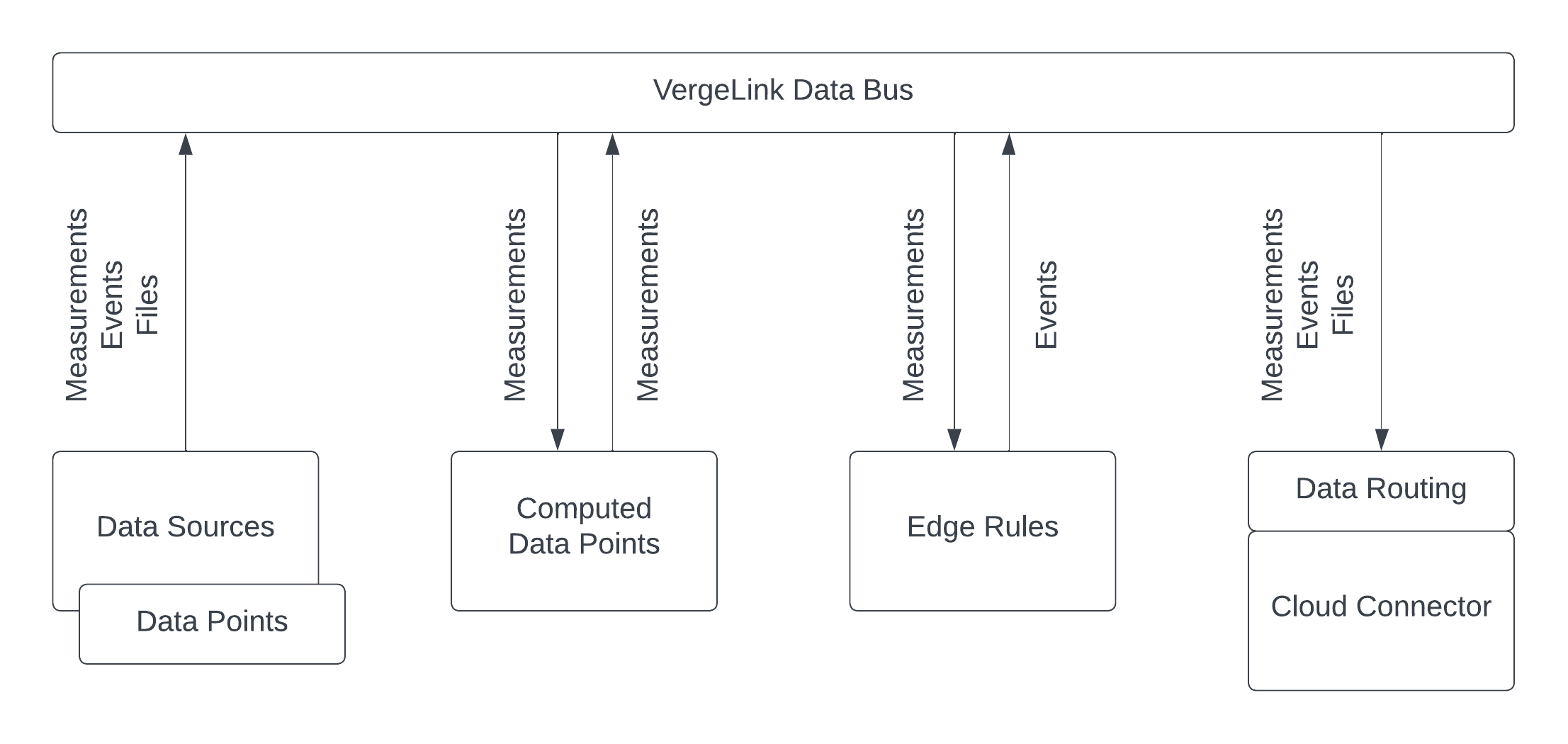VergeLink DataBus
Introduction
Internally VergeLink uses a kind of "Data Bus" to transmit data messages between the different components of VergeLink. This is exposed to you as the user in some cases, for example when you select which data to route to your specific cloud connector or when you create a custom MQTT or REST protocol.
Types of data
On this data bus there are three main types (of objects) that are transmitted:
- Measurements - Represents time series data, that means a timestamp, data point and it's value.
- Events - Represents events, that means timestamp, event type, name, text and metadata.
- Files - Contains a file or blob, the DataBus is unaware of the format (TXT, CSV, Binary etc.)
Data Flow

In VergeLink data of all types is created, modified and routed by different components of the Edge Runtime:
- Data Sources with Data Points - Data sources can read all three types of data, this data is often read or subscribed from external systems (PLCs and other field devices). Some data is created in VergeLink directly at the data source level, for example Events can be created by VergeLink based on Texts Lists assigned to the data source.
- Computed Data Points - Can calculate or otherwise compute new Measurements from existing ones, for example by scaling an analog value to SI units.
- Edge Rules - Can create Events from Measurements
- Cloud Connector - Transmits all types of data to target systems (For example, cloud platforms)
Data Routing
For each cloud connector you can select which type of data, individual data points, rules or files are transmitted to each Cloud Connector. The Data Routing stage acts as a filter.